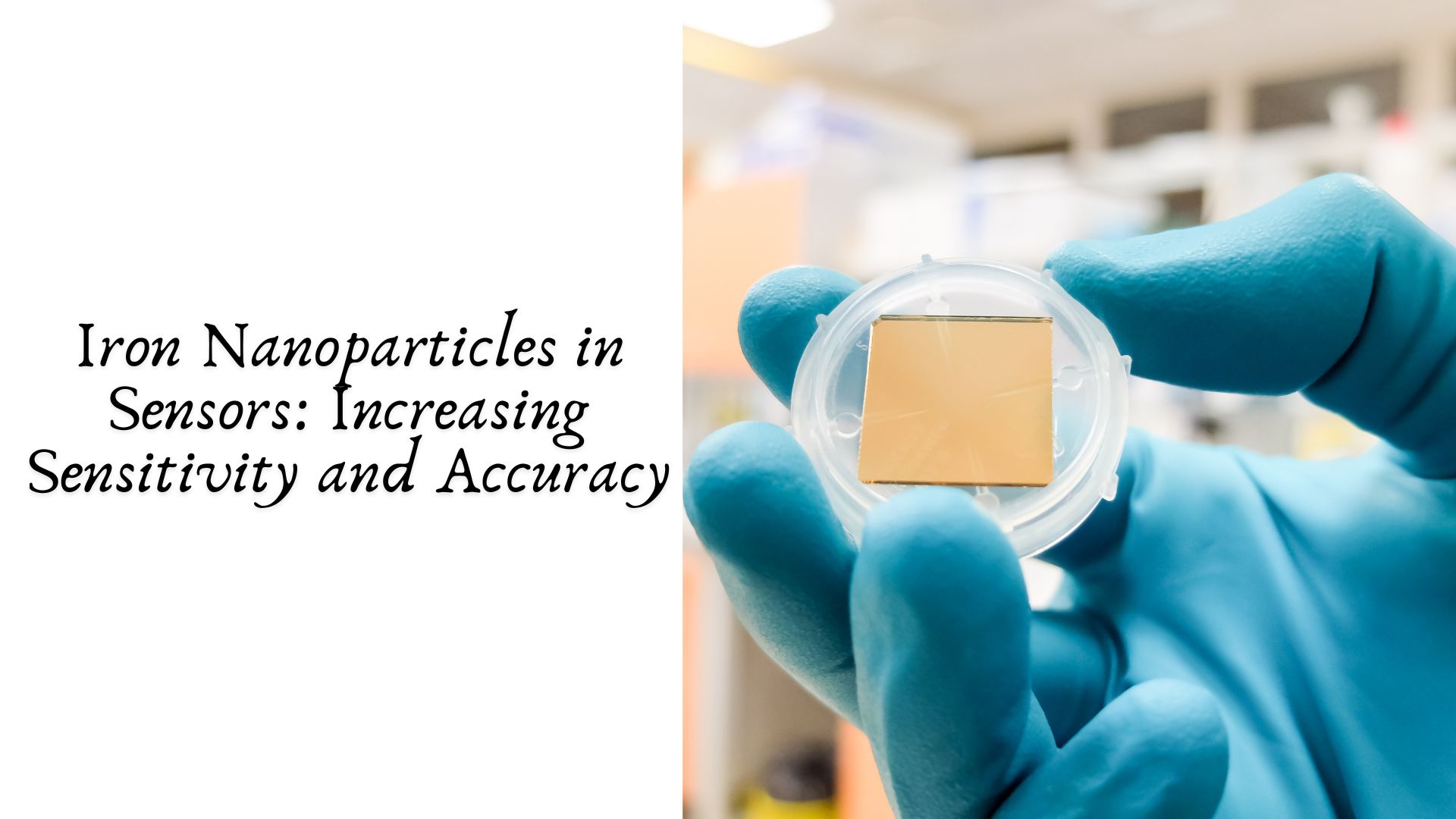Introduction
In recent years, the field of nanotechnology has seen tremendous growth and innovation, leading to significant advancements in various scientific and industrial applications. Among the numerous nanomaterials developed, iron nanoparticles have garnered considerable attention for their unique properties and versatile applications. One of the most promising areas where iron nanoparticles have made a substantial impact is in sensor technology. This article explores how iron nanoparticles are enhancing the sensitivity and accuracy of sensors, delving into their properties, applications, and future potential.
Properties of Iron Nanoparticles
Iron nanoparticles exhibit several unique properties that make them ideal for sensor applications. These properties include:
High Surface Area-to-Volume Ratio
Iron nanoparticles possess a high surface area-to-volume ratio, which increases their reactivity and interaction with target molecules. This property is crucial for sensors as it enhances their ability to detect even minute quantities of analytes.
Magnetic Properties
Iron nanoparticles exhibit strong magnetic properties, making them highly responsive to magnetic fields. This characteristic is particularly useful in magnetic sensors, where the presence of a magnetic field can alter the behavior of the nanoparticles, leading to precise measurements.
Catalytic Activity
Iron nanoparticles have excellent catalytic activity, which can be leveraged in chemical sensors to facilitate the detection of specific substances. Their ability to catalyze reactions at a nanoscale level allows for faster and more accurate sensor responses.
Electrical Conductivity
The electrical conductivity of iron nanoparticles is another essential property that enhances their performance in sensors. This feature enables efficient electron transfer, crucial for electrochemical sensors that rely on changes in electrical signals to detect analytes.
Applications of Iron Nanoparticles in Sensors
The unique properties of iron nanoparticles have paved the way for their integration into various types of sensors. Some notable applications include:
Gas Sensors
Iron nanoparticles are widely used in gas sensors to detect hazardous gases such as carbon monoxide, methane, and hydrogen sulfide. The high surface area and reactivity of iron nanoparticles enable the detection of low gas concentrations, improving the sensitivity and accuracy of the sensors. Additionally, the catalytic activity of iron nanoparticles facilitates the oxidation or reduction of gas molecules, leading to a measurable change in electrical conductivity.
Biosensors
In the field of biosensors, iron nanoparticles are employed to detect biological molecules such as proteins, DNA, and glucose. Their high surface area allows for the immobilization of biomolecules, enhancing the sensor’s ability to capture and detect target analytes. Furthermore, the magnetic properties of iron nanoparticles enable the use of magnetic separation techniques, improving the selectivity and accuracy of biosensors.
Environmental Sensors
Iron nanoparticles are also utilized in environmental sensors to monitor pollutants in air, water, and soil. Their reactivity and catalytic activity enable the detection of trace amounts of contaminants, providing valuable data for environmental monitoring and pollution control. For instance, iron nanoparticles can be used to detect heavy metals in water through changes in electrochemical signals.
Magnetic Sensors
The magnetic properties of iron nanoparticles make them ideal for magnetic sensors used in various applications, including medical imaging, data storage, and navigation systems. In magnetic resonance imaging (MRI), iron nanoparticles enhance the contrast of images, improving the accuracy of diagnostic procedures. In data storage, they enable the development of high-density magnetic storage devices with increased sensitivity.
Enhancing Sensitivity and Accuracy
The integration of iron nanoparticles into sensor technology has led to significant improvements in sensitivity and accuracy. Several strategies are employed to maximize these enhancements:
Functionalization
Functionalizing iron nanoparticles with specific ligands or coatings can increase their selectivity towards target analytes. This approach involves attaching molecules that interact selectively with the analyte, thereby improving the sensor’s ability to distinguish between different substances.
Nanocomposites
Combining iron nanoparticles with other nanomaterials, such as carbon nanotubes or graphene, can create nanocomposites with synergistic properties. These nanocomposites exhibit enhanced electrical conductivity, mechanical strength, and chemical stability, leading to improved sensor performance.
Miniaturization
The small size of iron nanoparticles allows for the miniaturization of sensors, enabling the development of portable and wearable sensing devices. Miniaturized sensors offer real-time monitoring capabilities and can be integrated into various applications, including healthcare and environmental monitoring.
Signal Amplification
Iron nanoparticles can be used to amplify the signals generated by sensors, increasing their sensitivity. For example, in electrochemical sensors, iron nanoparticles can enhance the electron transfer process, resulting in a stronger and more detectable signal.
Future Prospects
The future of iron nanoparticles in sensor technology looks promising, with ongoing research and development efforts focused on further enhancing their properties and applications. Some potential future directions include:
Smart Sensors
The development of smart sensors that can adapt to changing environmental conditions and provide real-time feedback is an exciting prospect. Iron nanoparticles can play a crucial role in these sensors, enabling them to detect and respond to multiple analytes simultaneously.
Wearable Technology
The integration of iron nanoparticles into wearable sensors holds great potential for healthcare applications. These sensors can monitor vital signs, detect diseases, and provide personalized health data, improving patient care and outcomes.
Environmental Monitoring
Advancements in iron nanoparticle-based sensors can lead to more accurate and comprehensive environmental monitoring systems. These systems can provide valuable data for addressing pollution, climate change, and natural resource management.
Industrial Applications
In industrial settings, iron nanoparticle-based sensors can improve process control and quality assurance. Their high sensitivity and accuracy can lead to more efficient and sustainable manufacturing practices.
Conclusion
Iron nanoparticles have revolutionized sensor technology, offering unparalleled sensitivity and accuracy. Their unique properties, such as high surface area-to-volume ratio, magnetic properties, catalytic activity, and electrical conductivity, make them ideal for various sensor applications. As research and development continue to advance, the potential of iron nanoparticles in sensors will only grow, leading to innovative solutions for healthcare, environmental monitoring, and industrial applications. The future of sensor technology is bright, with iron nanoparticles at the forefront of these exciting advancements.
